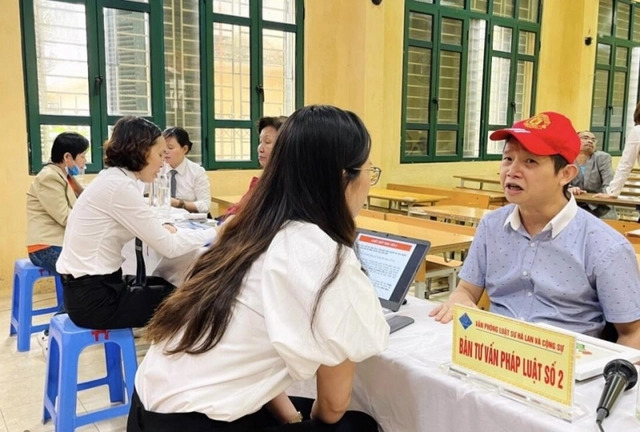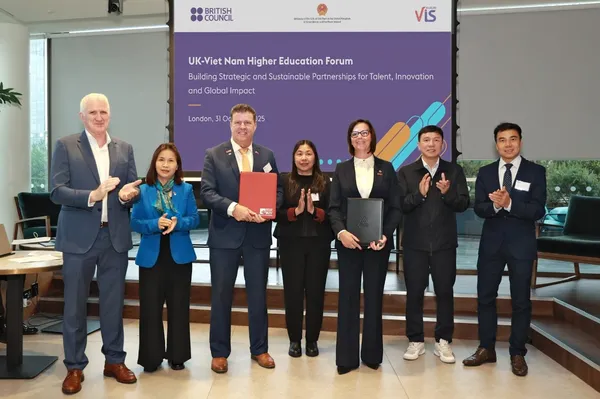 Society
Society

UNESCO in Việt Nam and Signify Foundation in Việt Nam have provided solar lighting systems and portable solar lamps to more than 5,000 students at 16 secondary schools in remote, disadvantaged areas in three provinces of Hà Giang, Ninh Thuận and Sóc Trăng.

|
| A solar lamp provided by UNESCO and Signify Foundation helps students study in the evening. — Photo courtesy of Signify |
HÀ NỘI — UNESCO in Việt Nam and Signify Foundation in Việt Nam have provided solar lighting systems and portable solar lamps to more than 5,000 students at 16 secondary schools in remote, disadvantaged areas in three provinces of Hà Giang, Ninh Thuận and Sóc Trăng.
The organisations on Tuesday announced that the installation of the systems has been completed at the schools. Accordingly, 1,900 portable solar lamps, seven school-yard lighting systems and other indoor/outdoor LED lighting systems were installed under the project “Lighting up the future of the ethnic minorities in Việt Nam” that was launched in the middle of last year.
The project aims to increase the lighting quality to facilitate learning as well as help raise confidence and safety in going to school and returning home.
The majority of selected schools are located in remote areas with limited access to electricity where students at times need up to two hours to commute to school. They are said to wake up as early as 4am, especially for students in non-boarding schools, to reach school on time.
By supporting the set-up of solar lighting in selected schools, the project, supported by Signify - a lighting system manufacturer - is expected to enhance safety within schools and beyond by lending portable solar lamps to light the way for students commuting to and from school.
Nguyễn Thế Bình, the Director of Hà Giang Province's Department of Education and Training Department, said that improved lighting systems at schools not only helped teachers and educational administrators there be more committed and motivated to their work but also enabled students with difficulties to better access educational opportunities, to enjoy school more and to stay longer at school.
“Apart from ensuring the quality of education and training, teachers in mountainous disadvantaged areas have to take care of the students’ lives, especially the ones from semi-boarding schools,” Bình said, adding that they had to convince parents to send their children to schools and motivate the students not to drop out.
“Although Hà Giang has made a lot of progress in education in recent years, the conditions for the education of the students here are not yet similar to those of students in other rural areas, much less those in urban ones,” Bình said.
Mr. Michael Croft, UNESCO Representative to Việt Nam, said that: “To help solve the difficulties of Hà Giang and other mountainous provinces whose majorities are ethnic minorities, UNESCO will continue co-operating with the stakeholders such as CJ Group from Korea or Signify Foundation from Việt Nam enhance the access to the educational opportunities for the ethnic minority students, especially girls.”
He added that UNESCO would mobilise further assistance from the partners for ethnic minority groups.
For examples, raising the awareness of the communities on the importance of learning and training to our ethnic children, strengthening communications, improving the counselling skills of teachers and educational administrators to create a safe, respected, equal and gender-sensitive learning environment, promoting career orientation training and improving the connections between the communities and the local enterprises.
Phùng Hoài Dương, Director General of Signify Việt Nam, said that ethnic minority communities, particularly students living in mountainous, remote, disadvantaged areas faced challenges due to limited access to electricity.
“We hope that when they are equipped with advanced solar lighting systems, they will have better living/studying conditions, thus, motivating them attend classes and study better,” he said, adding that the assistance was a way to unlock the potential of lights for a brighter life and a brighter world. — VNS

.jpg)
.jpg)

